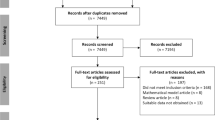Abstract
Activities ordinarily performed by an animal in a given place may influence the way it behaves towards an object newly found there. We examined the use of probing tools in a group of 4 wedge-capped capuchins (Cebus olivaceus), in the home cage into which we simultaneously introduced two identical apparatuses, one at a site ordinarily used to manipulate objects, and the other at a site mainly used for visual monitoring. We expected that spatial facilitation would occur, i.e., the subjects would be more efficient at the site where manipulative behaviors were more frequently performed. Two monkeys used probing tools to extract syrup from the openings of the apparatuses. Tool use efficiency was higher with the apparatus located at the site where they had performed more manipulative and combinative behaviors. These results are consistent with the hypothesis of spatial facilitation and illustrate the fact that spatial context can be an overwhelming variable that should not be neglected in behavioral research dealing with instrumental tasks.
Similar content being viewed by others
REFERENCES
Beck, B. B. (1980). Animal Tool Behavior: The Use and Manufacture of Tools by Animals, Garland STPM Press, New York.
Byrne, G., and Suomi, S. J. (1996). Individual differences in object manipulation in a colony of tufted capuchins. J. Human. Evol. 31: 259-267.
Costello, M. B., and Fragaszy, D. M. (1988). Prehension in Cebus and Saimiri: I. Grip type and hand preference. Am. J. Primatol. 15: 235-245.
Dubois, M., Sampaio, E., Gerard, J. F., Quenette, P. Y., and Muniz, J. (2000). Location-specific responsiveness to environmental perturbations in wedge-capped capuchins (Cebus olivaceus). Int. J. Primatol. 21: 85-102.
Fragaszy, D. M., and Visalberghi, E. (1989). Social influences on the acquisition of tool-using behaviors in tufted capuchin monkeys (Cebus apella). J. Comp. Psychol. 103: 159-170.
Fragaszy, D. M., and Adams-Curtis, L. (1991). Generative aspects of manipulation in tufted capuchin monkeys. J. Comp. Psychol. 105: 387-397.
Fragaszy, D. M., Vitale, A. F., and Ritchie, B. (1994). Variation among juvenile capuchins in social influences on exploration. Am. J. Primatol. 32: 249-260.
McGrew, W. C. (1992). Chimpanzee Material Culture: Implications for Human Evolution, Cambridge University Press, Cambridge.
McGrew, W. C., and Marchant, L. F. (1992). Chimpanzees, tools, and termites: Hand preference or handedness? Current Anthropol. 33: 113-119.
Nishida, T., and Hiraiwa, M. (1982). Natural history of a tool-using behavior by wild chimpanzees in feeding upon wood-boring ants. J. Human Evol. 11: 73-99.
Parker, S. T., and Gibson, K. R. (1977). Object manipulation, tool use and sensorimotor intelligence as feeding adaptations in Cebus monkeys and great apes. J. Human Evol. 6: 623-641.
Turvey, M. T., Shaw, R. E., Reed, E. S., and Mace, W. M. (1981). Ecological laws of perceiving and acting. Cognition 9: 237-304.
Urbani, B. (1999). Spontaneous use of tools by wedge-capped capuchin monkeys (Cebus olivaceus). Folia Primatol. 70: 172-174.
Van Lawick-Goodall, J. (1970). Tool-using in primates and other vertebrates. In Lehrman, D., Hinde, R., and Shaw, E. (eds.), Advances in the Study of Behavior, Vol. 3. Academic press, New York, pp. 195-249.
Visalberghi, E. (1987). Acquisition of nut-cracking behavior by two capuchin monkeys (Cebus apella). Int. J. Primatol. 49: 168-181.
Visalberghi, E. (1990). Tool use in Cebus. Folia Primatol. 54: 146-154.
Visalberghi, E., and Fragaszy, D. (1990). Food washing behaviour in tufted capuchin monkeys and crab-eating macaques. Anim. Behav. 40: 829-836.
Visalberghi, E., and Fragaszy, D. (1996). Pedagogy and imitation in monkeys: Yes, no, or maybe? In Olson, D. R., and Torrance, N. (eds.), The Handbook of Education and Human Development, Blackwell, Cambridge, MA, pp. 277-301.
Visalberghi, E., and Limongelli, L. (1994). Lack of comprehension of cause-effect relations in tool-using capuchin monkeys (Cebus apella). J. Comp. Psychol. 108: 15-22.
Westergaard, G. C. (1991). Hand preference in the use and manufacture of tools by tufted capuchins (Cebus apella) and lion-tailed macaque (Macaca silenus) monkeys. J. Comp. Psychol. 105: 172-176.
Westergaard, G. C., and Fragaszy, D. M. (1987). The manufacture and use of tools by capuchin monkeys (Cebus apella). J. Comp. Psychol. 101: 159-168.
Westergaard, G. C., and Suomi, S. J. (1994). The use of probing tools by capuchin monkeys: Evidence for increased right-hand preference with age. Int. J. Primatol. 15: 521-529.
Westergaard, G. C., Wagner, J. L., and Suomi, S. J. (1999). Manipulative tendencies of Captive Cebus albifrons. Int. J. Primatol. 20: 751-759.
Author information
Authors and Affiliations
Corresponding author
Rights and permissions
About this article
Cite this article
Dubois, M., Gerard, JF., Sampaio, E. et al. Spatial Facilitation in a Probing Task in Wedge-Capped Capuchins (Cebus olivaceus). International Journal of Primatology 22, 993–1006 (2001). https://doi.org/10.1023/A:1012065605329
Issue Date:
DOI: https://doi.org/10.1023/A:1012065605329




